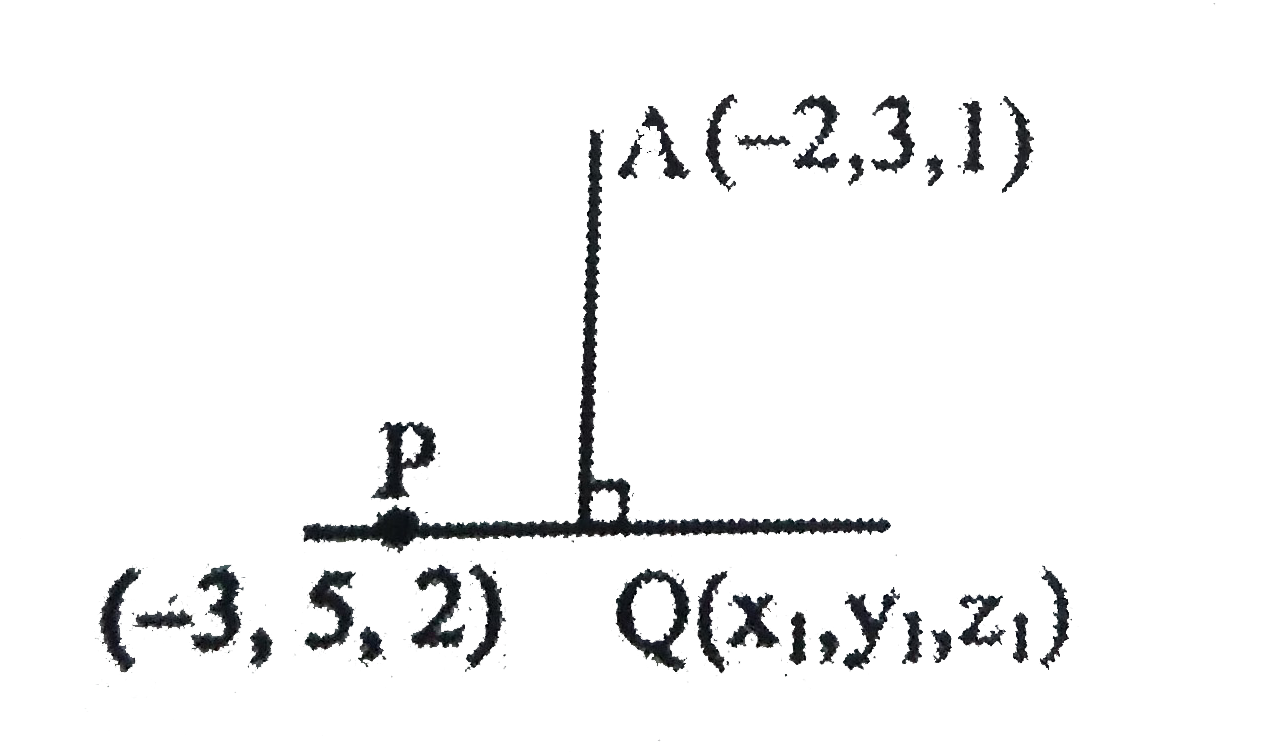The distance of point A(−2,3,1) from the line PQ through P(−3,5,2), which makes equal angles with the axes is a. 2/√3 b. 14/√3 c. 16/√3 d. 5/√3
2/ √3
√14/3
16/ √3
5/ √3
The correct Answer is:B
A(-2 , 3 , 1)

Equation of line PQ
⇒x+31=y−51=z−21=λ
⇒Q⎧⎪⎨⎪⎩x1=x=λ−3y1=y=λ+5z1=z=λ+2⎫⎪⎬⎪⎭
AQ ⊥ line PQ
⇒{1(λ−3+2)+1(λ+5−3)+1(λ+2−1)=03λ+2=0 ⇒λ=−23
AQ = √(−113+2)2+(133−3)2+(43−1)2
= √259+169+19
= √429=√143
Topper's Solved these Questions
Similar Questions
The distance of point A(−2,3,1) from the line PQ through P(−3,5,2), which makes equal angles with the axes is a. 2/√3 b. 14/√3 c. 16/√3 d. 5/√3
View SolutionThe distance of the point (1, 2, 3) from the plane x+y−z=5 measured along the straight line x=y=z is 5√3 (2) 10√3 (3) 3√10 3√5 (5) 2√5
View SolutionIf x=5+2√6, then x−1√x is equal to a. √2 b. √3 c. 2√2 d. 2√3
View SolutionThe rationalisation factor of √3 is (a)−√3 (b) 1√3 (c) 2√3 (d) −2√3
View SolutionThe perpendicular distance of the point P(3,3,4) from the x-axis is 3√2 b. 5 c. 3 d. 4
View SolutionIf tan(cos−1x)=sin(cot−1(12)) then x is equal to- a.1√5 b. 2√5 c. 3√5 d. √53
View SolutionThe length of the chord of the parabola y2=x which is bisected at the point (2, 1) is (a)2√3 (b) 4√3 (c) 3√2 (d) 2√5
View SolutionIf √2:(1+√3)√6:x then x is equal to √3+3 b. 1−√3 c. 1+√3 d. √3−3
View SolutionThe rationalisation factor of 2+√3 is (a) 2−√3 (b) √2+3 (c) √2−3 (d) √3−2
View Solution√6−4√3+√16−8√3 is equal to 1−√3 b. √3−1 c. 2(2−√3) d. 2(2+√3)
View Solution
